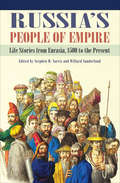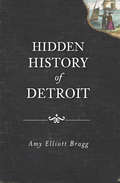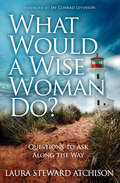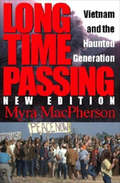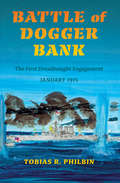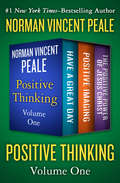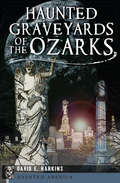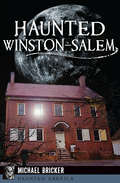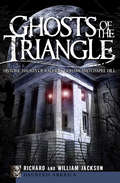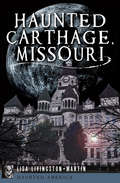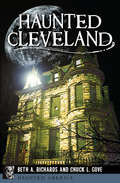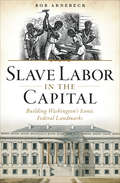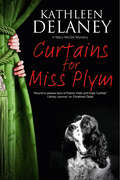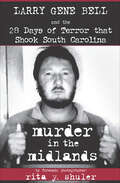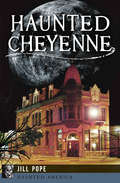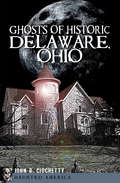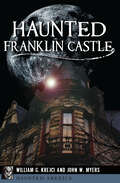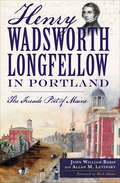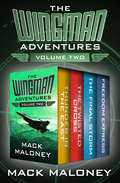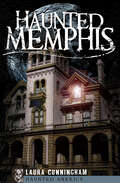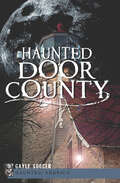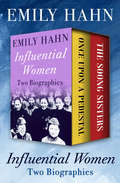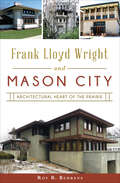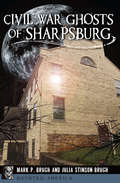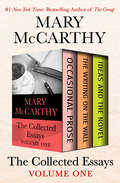- Table View
- List View
Russia's People of Empire: Life Stories from Eurasia, 1500 to the Present
by Stephen M. Norris and Willard Sunderland&“A fresh and lively approach to understanding how the various Russian empires have worked.&” —Slavic Review A fundamental dimension of the Russian historical experience has been the diversity of its people and cultures, religions and languages, landscapes and economies. For six centuries this diversity was contained within the sprawling territories of the Russian Empire and the Soviet Union, and it persists today in the entwined states and societies of the former USSR. Russia&’s People of Empire explores this enduring multicultural world through life stories of 31 individuals―famous and obscure, high born and low, men and women―that illuminate the cross-cultural exchanges at work from the late 1500s to post-Soviet Russia. Working on the scale of a single life, these microhistories shed new light on the multicultural character of the Russian Empire, which both shaped individuals&’ lives and in turn was shaped by them. &“[S]tudents of Russian empire would be well served with this work, given its snapshots of diverse imperial milieus and their attendant multicultural dialogues at the personal level.&” —Slavic and East European Journal &“This compilation . . . gives readers a more in-depth, personal understanding of how the inescapable existence of diversity in Russia and the Soviet Union related to everyday life . . . Highly recommended.&” —Choice
Hidden History of Detroit (Hidden History Ser.)
by Amy Elliott Bragg&“Engaging&” stories of what the Motor City was like before the invention of the motor, with photos and illustrations (Detroit Metro-Times). Long before it became the twentieth-century automotive capital, Detroit was a muddy port town full of grog shops, horse races, haphazard cemeteries, and enterprising bootstrappers from all over the world. In this lively book you&’ll discover the city&’s forgotten history and meet a variety of unforgettable characters—the argumentative French fugitive who founded the city; the tobacco magnate who haunts his shuttered factory; the gambler prankster millionaire who built a monument to himself; the governor who brought his scholarly library with him on canoe expeditions; and the historians who helped create the story of Detroit as we know it: one of the oldest, rowdiest, and most enigmatic cities in the Midwest.
What Would a Wise Woman Do?: Questions to Ask Along the Way
by Laura Steward AtchisonWhether you feel stuck on autopilot—or totally off course—this book provides a roadmap back to a more authentic and joyful life. Laura Atchison seemed to have it all—a great career, ambitious goals, and a loving family—when she realized that she was off course. By digging deeper, she discovered she hadn&’t been asking herself the right questions, and as a result, had been living the wrong answers. By revealing her riveting and candid story—including mistakes she made along the way—Atchison provides practical lessons on how to be a wiser and more fulfilled woman by asking the right key questions—about career, family, relationships, spiritual life, finances, and more. &“Shows you how to ask the right questions at every turn to create the path of your dreams.&” —Melissa Tosetti, author of Living the Savvy Life
Long Time Passing: Vietnam and the Haunted Generation
by Myra MacPhersonThis new edition of a classic book on the impact of the Vietnam War on Americans reintroduces the haunted voices of the Vietnam era to a new generation of readers. Based on more than 500 interviews, Long Time Passing is journalist Myra MacPherson&’s acclaimed exploration of the wounds, pride, and guilt of those who fought and those who refused to fight the war that continues to envelop the psyche of this nation. In a new introduction, Myra MacPherson reflects on what has changed, and what hasn&’t, in the years since these interviews were conducted, explains the key points of reference from the 1980s that feature prominently in them, and brings the stories of her principal characters up to date. &“A haunting chorus of voices, a moving deeply disturbing evocation of an era.&” —San Francisco Chronicle &“A brilliant and necessary book . . . this stunning depiction of Vietnam&’s bitter fruit is calculated to agitate even the most complacent American.&” —Philadelphia Inquirer &“There have been many books on the Vietnam War, but few have captured its second life as memory better than Long Time Passing.&” —Washington Post Book World &“Enthralling reading . . . full of deep and strong emotions.&” —New York Times
Battle of Dogger Bank: The First Dreadnought Engagement, January 1915 (Twentieth-Century Battles)
by Tobias R. PhilbinThe definitive study of one of the pivotal naval battles of the Great War. On January 24, 1915, a German naval force commanded by Admiral Franz von Hipper conducted a raid on British fishing fleets in the area of the Dogger Banks. The force was engaged by a British force, which had been alerted by a decoded radio intercept. The ensuing battle would prove to be the largest and longest surface engagement until the Battle of Jutland the following summer. While the Germans lost an armored cruiser with heavy loss of life and Hipper&’s flagship was almost sunk, confusion in executing orders allowed the Germans to escape. The British considered the battle a victory; but the Germans had learned important lessons and they would be better prepared for the next encounter with the British fleet at Jutand. Tobias Philbin&’s Battle of Dogger Bank provides a keen analytical description of the battle and its place in the naval history of World War I. &“Tobias Philbin has written a very entertaining and informative book on the Battle of Dogger Bank. It will be enjoyed by a wide audience including naval historians, strategists, and those interested in how broader long-term decision-making determines the manner in which battles are fought, won and lost.&” —The International Journal of Maritime History &“The author&’s research in British and German archives and knowledge of secondary sources produces a significant work on the war at sea.&” —Stand-To &“An interesting and stimulating book that is a useful contribution to the history of the First World War in the North Sea.&” —The Mariner&’s Mirror
Positive Thinking Volume One: Have a Great Day, Positive Imaging, and The Positive Power of Jesus Christ
by Norman Vincent PealeA treasure trove of inspiration and guidance from the minister and million-selling author of The Power of Positive Thinking. Norman Vincent Peale&’s self-help phenomenon The Power of Positive Thinking continues to transform countless lives. The volumes collected here serve to expand and deepen Dr. Peale&’s life-changing philosophy of positivity. Have a Great Day: The philosopher, self-help innovator, and minister offers inspiration for every day of the year with an uplifting volume of positive thought to nourish our souls and spirits. From profound &“thought conditioners&” accentuating the everyday positive to &“spirit lifters&” devised to help us soar above our troubles, Dr. Peale&’s affirmations are &“daily vitamins&” for our mental and spiritual health. Positive Imaging: Building on Dr. Peale&’s principles of constructive affirmation, this step-by-step guide shows you how to utilize a potent mental process called &“imaging.&” Keeping a clear and vivid picture of a desired goal in your mind until it becomes part of your subconscious will help you break through the barriers that block you from achieving harmony, happiness, and success—and allow you to actualize your objectives by releasing previously untapped inner energies. The Positive Power of Jesus Christ: The revered pastor of the world-famous Marble Collegiate Church proclaims his unshakable faith in Christ the Savior through inspiring true stories of healing and hope. In sharing the ways in which his life and the lives of others have been profoundly touched and transformed by Jesus, Dr. Peale makes plain how &“positive thinking really means a faith attitude . . . [and] only faith can turn the life around.&”
Haunted Graveyards of the Ozarks (Haunted America)
by David E. HarkinsA terrifying tour of cemeteries where ghosts of Civil War soldiers, criminals, and others wander the grounds . . . includes photos! From the neatly tended urban necropolis to the long-forgotten family plot at the end of a winding gravel road, these &“quiet cities&” of the Ozarks have the power to send chills up and down the spine of the most hardened skeptic. Be it the restless Civil War soldiers of Greenbrier, the mass murderer who stalks Peace Church, or the red eyes that persecute visitors to Robinson, tales of ghostly activity abound in every burial ground carved out of the ancient Ozark hills. Follow Dave Harkins as he explores the fascinating history and unsettling lore clinging to these haunted graveyards.
Haunted Winston-Salem (Haunted America)
by Michael BrickerDouble your chills by delving into the dual heritage of this North Carolina city—stories of haints, witches, ghosts, and beyond . . . Whether it was Winston, Salem, or Winston-Salem, the city has a rich history in the strange, unusual, and ghostly. Colonial Salem was once visited by George Washington, and accounts tell of the president entering the cave of three witches. Locals still see an old tobacco wagon rolling around the streets of Winston in the early morning, harkening back to the days when tobacco was king. Elaborate systems of tunnels and pipes once existed beneath the city that many believe were home to groups of chanting monks. Join author and historian Michael Bricker as he vividly retells these stories and more in a historically haunted guide to Winton-Salem. Includes photos!
Ghosts of the Triangle: Historic Haunts of Raleigh, Durham and Chapel Hill (Haunted America)
by Richard Jackson William JacksonA hub of research and technology, North Carolina&’s tri-city region is built on the bones of a haunted past that&’s brought to life in twisted tales. The Research Triangle is a place of renowned progress and technology, but its three cities also boast a long and rich heritage, complete with many important historic sites where the past lingers a little too closely. From the otherworldly music at the Carolina Inn to the sound of laughter echoing in the old morgue at Watts Hospital to the image of men swinging from ropes in Hannah&’s Creek Swamp, the ghosts of the Triangle continue to make their presence known throughout the region. Join local brothers Richard and William Jackson as they trace the history behind these spine-tingling tales. Includes photos!
Haunted Carthage, Missouri (Haunted America)
by Lisa Livingston-MartinThe author of Civil War Ghosts of Southwest Missouri takes the paranormal pulse of this rustic city in the heart of the Ozarks. A rich mixture of inexplicable history and eerie happenstance runs through the portion of the Ozark Plateau that Carthage has carved out for itself. Woodland cabins greet visitors with phantom hosts or vanish into the night entirely. Rumors tell of lost Spanish treasure caravans haunting the hills with the same persistence as the Confederate guerrillas who were run aground there. But the town itself isn&’t immune from the encroachment of the supernatural; the drama of tragic death continues to find a stage in an opera house, a hospital, and an elegant residence. Lisa Livingston-Martin tracks down the fiercest and most fascinating specters from Carthage&’s past. Includes photos! &“According to the book Haunted Carthage, Missouri by Lisa Livingston-Martin, there have been many sightings and various paranormal events in and around Carthage.&” —The Joplin Globe
Haunted Cleveland (Haunted America)
by Chuck L. Gove Beth A. RichardsStories and photos that reveal the haunting history of Cleveland, Ohio. Many of Cleveland&’s dearly departed haunt the Forest City to this day. A spirit lingers in the ballroom, and a little girl cries on the third floor of Franklin Castle, the most haunted site in the city. The man in the green hat will not leave the stage at the Palace Theater. Chief Joc-O-Sot still wanders Erie Street Cemetery centuries after his death, unable to rest in his grave, while a phantom in full Civil War uniform paces inside the Soldiers&’ and Sailors&’ Monument. In this fascinating book, authors Beth A. Richards and Chuck L. Gove of Haunted Cleveland Ghost Tours share the chilling tales of the city&’s spectral past.
Slave Labor in the Capital: Building Washington's Iconic Federal Landmarks
by Bob ArnebeckThe little-known history of how enslaved African Americans contributed to the building of the White House and other landmarks—includes illustrations. In 1791, President George Washington appointed a commission to build the future capital of the nation. Workers flocked to the city—but the commission found that paying masters of faraway Maryland plantations sixty dollars a year for their slaves made it easier to keep their payroll low. In 1798, half of the two hundred workers building the two most iconic Washington landmarks, the Capitol and the White House, were slaves. They moved stones for Scottish masons and sawed lumber for Irish carpenters. They cut trees and baked bricks. These unschooled young black men left no memoirs. Based on his research in the commissioners&’ records, author Bob Arnebeck describes their world of dawn-to-dusk work, salt pork and corn bread, white scorn and a kind nurse, and the moments when everything depended on their skills.
Curtains for Miss Plym: A Canine Mystery (The Mary McGill Mysteries #2)
by Kathleen DelaneyRetired schoolteacher Mary McGill and her dog Millie must sniff out a killer in this small town cozy mystery from the author of Purebred Dead. Preparations for Santa Louisa, California&’s annual spring rummage sale are thrown into chaos when organizer Mary McGill and her devoted cocker spaniel Millie come across a dead body on the premise. Still wearing her pink nightdress and slippers, what on earth was Miss Emilie Plym doing in a locked church hall in the dead of night? And who on earth would want to harm a sweet-natured elderly lady who wouldn&’t hurt a fly? As Mary questions the victim&’s nearest and dearest, she discovers that money may have been a motive. It seems that Miss Plym was withdrawing large amounts of cash from her trust fund, and now it&’s nowhere to be found. Someone seems to be after the dear old woman&’s fortune—and they won&’t stop at one murder to get what they want . . . &“Mary and Millie are such engaging characters . . . in this pleasant cozy.&” —Kirkus Reviews
Murder in the Midlands: Larry Gene Bell and the 28 Days of Terror that Shook South Carolina (True Crime Ser.)
by Rita Y. ShulerThe full story of the infamous double murder featured on Discovery&’s FBI Files—includes photos. In this book, former South Carolina Law Enforcement Division (SLED) forensic photographer Lt. Rita Y. Shuler recounts twenty-eight days of terror and shocking developments in one of the most notorious double murders and manhunts in South Carolina history. Shuler shares her own personal interactions with some of the key players in this famous manhunt and investigation. Also included are Bell&’s chilling calls from area phone booths to the Smith family, along with his disconcerting interviews and bizarre actions in the courtroom, which show the dark, evil, and criminal mind of this horrific killer. This is a comprehensive account of the case that has been featured on the Discovery Channel&’s FBI Files, in the CBS movie Nightmare in Columbia County, and on Court TV&’s Forensic Files.
Haunted Cheyenne (Haunted America)
by Jill PopeLearn how the West was haunted, as historian, author, and ghost story collector Jill Pope takes you on a spectral tour of Wyoming&’s capital city. In 1867, at the spot where the Union Pacific Railroad crossed Crow Creek, the city of Cheyenne was born. Since then, the Magic City of the Plains has had a long history of hauntings. Drop into the Shadows Pub and Grill, and you may find yourself sharing a drink with a spectral patron from another era. Spend a night at the Historic Plains Hotel, and you may run into one of the many ghostly guests who refuse to check out. Even the Wrangler store seems to be home to a phantom cowboy. From the ghosts of the historic depot and rail yard to the spirits that still linger in some of the city&’s private homes, this frontier town is filled with spooky happenings and chilling sightings. Join writer and guide Jill Pope on a tour of the stories behind this city&’s most chilling spots. Includes photos! &“If there is anyone in town who knows about Cheyenne&’s ghosts, it&’s local historian and author Jill Pope. She can rattle off scores of stories tied to most of the buildings downtown, ranging from a murder in the Cheyenne Depot to a freak accident outside the Hynds Building.&” —Wyoming Tribune Eagle
Ghosts of Historic Delaware, Ohio (Haunted America)
by John B. CiochettyThe Olentangy River runs through it—and ghosts inhabit it. Take a tour of central Ohio&’s haunted hamlet with its resident paranormal expert. The infamous Vaudeville ghost that still puts on a show at the Strand, the mischievous, piano-playing poltergeists of the Arts Castle, and the bearded ghoul that speeds at a hellish pace down North Franklin Street in a horse-drawn carriage―these are the otherworldly denizens of Delaware, Ohio. Local ghost expert John B. Ciochetty&’s collection of haunted lore will have skeptics and believers alike looking over their shoulders as they walk down the city streets. Behind the folklore and legends, readers will find the strange but hard facts of history that have given rise to tales of the city&’s restless spirits. Join Ciochetty as he explores the other side of Delaware to discover its spine-tingling, haunted history. Includes photos! &“Delaware&’s local ghost expert . . . experienced several paranormal encounters on campus. That&’s what inspired him to write books about paranormal activities at the university and around Delaware.&” —The Delaware Gazette
Haunted Franklin Castle (Haunted America)
by William G. Krejci John W. MyersCleveland&’s gothic mansion plays host to murder and mayhem in a book that &“couples that delightful sense of mystery with plenty of ghost stories&” (Cleve Scene). For more than half a century, the Franklin Castle&’s dark façade has lured curiosity seekers from around the world. Behind its iron gates, this Victorian-era structure harbors rumors of everything from insanity to mass murder. Disembodied voices echo from empty rooms, doors open and close of their own accord and cold spots drift about the manse. Witnesses swear to sightings of a woman in black and a young girl in white, believed to be the ghostly apparitions of the wife and daughter of the original owner, Hannes Tiedemann. Using previously unpublished photographs, interviews, family accounts, floor plans, and nearly forty years of research, authors William G. Krejci and John W. Myers finally reveal the true and definitive history of Cleveland&’s notorious Franklin Castle. Includes photos! &“There are so many tales to tell—things like hidden rooms, outrageous parties and colorful occupants.&” —Cleveland19
Henry Wadsworth Longfellow in Portland: The Fireside Poet of Maine
by John William Babin Allan M. LevinskyA look at the beloved American poet&’s home and family, and a glimpse at the early years of Portland, Maine. When a former Revolutionary War general named Peleg Wadsworth finished building a two-story brick house on Congress Street in 1786, the &“province of Maine&” was still considered part of Massachusetts, and he could see the Fore River from his front door. The city would grow up around the structure, as the Wadsworth-Longfellow family flourished and made history within its walls—and in the fabric of young America&’s culture and government. Peleg&’s daughter, Zilpah, married Stephen Longfellow IV on the first floor, and they raised their eight children in the home with love and high standards. Their second-eldest son, Henry Wadsworth Longfellow, wrote his first childhood poem there before going on to pen great classics including &“Paul Revere&’s Ride&” and Evangeline. Young Henry also watched his father help craft the Maine Constitution, and experienced revolutionary ideals of his home city. This book takes you inside the historic Longfellow House—and lets you explore the city that shaped a renowned American poet. Includes photos and illustrations
The Wingman Adventures Volume Two: Thunder in the East, The Twisted Cross, The Final Storm, and Freedom Express (Wingman)
by Mack MaloneyHawk Hunter is America&’s best hope—in the bestselling military adventure series by &“the best high-action thriller writer out there today, bar none&” (Jon Land). With nearly a quarter million copies sold, this high-octane series features Hawk Hunter, a fearless fighter pilot who saves the not-so-distant-future United States from the brink of all-out anarchy. Thunder in the East: The Soviet sneak attack crippled America, breaking the US into warring factions ruled by dictators, thugs, and thieves. In the western territories, democracy has survived—thanks to Maj. Hawk Hunter, the greatest fighter pilot of his time, and the Pacific American Air Corps. After narrowly stopping a Soviet ground invasion, Hunter vows to restore his beloved country—and he will begin by reclaiming Football City, formerly known as St. Louis, until it was captured by a criminal army from New Chicago. Only Hunter can break through its walls and lead his army onward to reclaim Washington, DC. The Twisted Cross: A new threat has emerged from the south. An army of neo-Nazis has seized control of the Panama Canal, and they&’re armed to the teeth. Their hateful ideology may be decades out of date, but these jackbooted killers have firepower that is state-of-the-art. They&’re going to need it . . . because the Wingman is coming. The Final Storm: The Soviet Union had nearly been defeated when the vice president of the United States revealed himself as a traitor. He deactivated the defense grid just long enough for the Russians to strike, reducing America to a battle-scarred wasteland. Fighter pilot Hawk Hunter rebuilt the country one dogfight at a time. Now he&’s headed for the vice president&’s compound in Bermuda, backed by a team of commandos, to bring America&’s greatest traitor to justice, dead or alive. Freedom Express: After fighting off the Red Army invasion, Maj. Hawk Hunter and what remained of the country&’s armed forces spent years rebuilding their nation. Only one territory was left deserted: the Southwest, now known as the Badlands. To reestablish the overland route between the eastern and western regions, a train of modern pioneers is sent across the desert. The train makes it safely, but when it arrives in Los Angeles, every passenger on board has vanished. To bring the fight to the bandits, Hunter trades in his F-16 for his own specially designed locomotive: a super-fortress on rails. The new Wild West is about to be tamed—Wingman-style.
Haunted Memphis (Haunted America)
by Laura Cunningham&“Spine-tingling ghost stories . . . Thrilling tales of the Bluff City&’s past&” (Memphis Reads). Much like its muddy riverbanks, the mid-South is flooded with tales of shadowy spirits lurking among us. Beyond the rhythm of the blues and tapping of blue suede shoes is a history steeped in horror. From the restless souls of Elmwood Cemetery to the voodoo vices of Beale Street, phantom hymns of the Orpheum Theatre and Civil War soldiers still looking for a fight, peer beyond the shadows of the city&’s most historic sites. Author and lifelong resident Laura Cunningham expertly blends fright with history and presents the ghostly legends from Beale to Bartlett, Germantown to Collierville, in this one-of-a-kind volume no resident or visitor should be without. Includes photos! &“There are plenty of places in Memphis to go where the spirits aren&’t in costume or getting paid to make you scream. Laura Cunningham reveals all the terrifying details in [ Haunted Memphis].&” —WREG.com
Haunted Door County (Haunted America)
by Gayle SoucekDiscover the history of this Wisconsin county known for shipwrecks—and spirits . . . photos included! Because Door County received its name from &“Death&’s Door,&” the perilous strait with more freshwater shipwrecks than anywhere else in the world, it should be no surprise that the idyllic county has plenty of ghostly history. In the company of storyteller Gayle Soucek, meet lighthouse keepers whose sense of duty extends beyond the grave. Catch a glimpse of the phantom ship Le Griffon, never seen for more than a moment since it sailed through a crack in the ice in 1679. And it is not just the waters of Door County that carry the freight of haunted tales—Country Road T has its share of spooks, bizarre beasts have caused disturbances in the woods, and there are whispered rumors that infamous gangster Al Capone added to the county's stock of ghosts through a handful of brutal murders, including an ex-girlfriend and two unacknowledged children . . .
Influential Women: Two Biographies
by Emily HahnPortraits of pivotal American feminists and three of the most powerful women in twentieth-century China by the &“quintessential New Yorker narrator&” (The New York Times). Once Upon a Pedestal: After living an unconventional and exotic life for decades, New Yorker writer Emily Hahn was in her late sixties when this book was first published in 1974. As the Women&’s Movement continued to gain momentum, Hahn penned this &“essential history of the remarkable women who led the feminist movement in America.&” Her &“excellent and eminently readable&” biographical sketches include Susan B. Anthony, Clara Barton, Fanny Wright, the Grimké sisters, Margaret Sanger, Jane Addams, Victoria Woodhull, Harriet Martineau, Eleanor Roosevelt, and Betty Friedan (Publishers Weekly). &“[The] quintessential New Yorker narrator whose adventures over the last forty years have intrigued, amused and educated . . . Emily Hahn is, herself, a role model. It is fitting and felicitous for her to give us an armchair guide to strong-minded American women.&” —The New York Times The Soong Sisters: In 1935, intrepid journalist and fearless feminist Emily Hahn traveled to China and sent dispatches to the New Yorker. Through her lover, the Chinese poet Shao Xunmei, she met and established close bonds with three of the most instrumental women in twentieth-century Chinese history, who happened to be sisters. The Soong family was arguably the most influential family in Shanghai, even more so as eldest sister Eling married finance minister H. H. Kung; middle sister Chingling married Sun Yat-Sen, the founding father and first president of the Republic of China; and youngest sister Mayling married Chiang Kai-Shek, who succeeded Sun as the leader of the Republic of China. Hahn&’s chronicle of the family&’s history, written while bombs were falling during the Second Sino-Japanese War, and published in 1941, while Hahn was still in Japanese-occupied Hong Kong, is a vivid, comprehensive, and uniquely personal account of the sisters who would become known to the world as Madame Kung, Madame Sun, and Madame Chiang Kai-Shek. &“First rate reportorial job on three distinguished women . . . [a] tribute to their work and their individual heroisms.&” —Kirkus Reviews
Frank Lloyd Wright and Mason City: Architectural Heart of the Prairie
by Roy R. Behrens&“A superb study of what a stellar group of architects accomplished in the Iowa locale, not to mention the vision of the locals&” (Universitas). In the early 1900s, Frank Lloyd Wright transformed a small midwestern prairie community into one of the world&’s most important architectural destinations. Mason City, Iowa, became home to his City National Bank and Park Inn—the last surviving Wright hotel. In addition, his prototype Stockman House helped launch the Prairie School architectural style. Soon after, architect Walter Burley Griffin followed in Wright&’s footsteps, designing a cluster of Prairie School homes in the Rock Crest/Rock Glen neighborhood. Design historian Roy Behrens leads the way through Mason City&’s historic development from the Industrial Revolution to the modern era of Frank Lloyd Wright. Includes photos &“A fine job of showcasing Wright&’s work in Mason City while incorporating some of Wright&’s personal (and scandalous!) history with the evolution of this north central Iowa town.&” —The Poetry of Sight
Civil War Ghosts of Sharpsburg (Haunted America)
by Julia Stinson Brugh Mark P. BrughThe Maryland town devastated by the bloodiest day of the Civil War—the Battle of Antietam—is now home to its ghostly victims. In September 1862, fighting from the Battle of Antietam spilled into Sharpsburg&’s streets. Residents were left to bury the dead from both sides. Today, locals report lingering echoes of that strife, from the faint taps of a Union drummer boy named Charley King to the phantom footsteps of Confederate soldiers charging up the stairs of the Rohrbach House. Two spectral girls seen playing by the Big Spring in Children&’s Alley may be Savilla Miller and Theresa Kretzer, best friends torn apart by their divided loyalties. Tour guides Mark P. Brugh and Julia Stinson Brugh craft a vivid portrait of Sharpsburg in the Civil War and bring to light stories of the ghosts for whom the conflict never ended. Includes photos! &“Folklore, social history, and a haunted village . . . Provides brief discussions of the historic architecture and ironwork of the village and sketches of the effects of battle upon the civilian population . . . Overall, the authors have set the folklore of hauntings with the context of a major historical event.&” —Civil War Librarian
The Collected Essays Volume One: Occasional Prose, The Writing on the Wall, and Ideas and the Novel
by Mary McCarthySpirited and insightful essays from the #1 New York Times–bestselling author of Memories of a Catholic Girlhood and a &“delightfully polished writer&” (The Atlantic Monthly). Whether penning criticism, memoir, or fiction, the New York Times–bestselling author of The Group invariably wrote with &“an icily honest eye and a glacial wit&” (The New York Times). Gathered here are three collections of her personal essays and literary criticism. Occasional Prose: McCarthy imbues this collection with her unique gifts of clear-eyed observation, sharp insight, and heartfelt passion as she gives us the story of La Traviata in her own words, reviews a charming and practical book on gardening, revisits Tolstoy&’s Anna Karenina, and eulogizes friends, including Hannah Arendt. &“Bracing opinions tartly expressed . . . May she continue to call us all to attention . . . showing us the world of her imagination, thought and rich experience.&” —The New York Times The Writing on the Wall: With engaging and thought-provoking essays on Madame Bovary, Macbeth, Vladimir Nabokov, George Orwell, William S. Burroughs, J. D. Salinger, and Hannah Arendt, this collection of literary reactions is distinguished by McCarthy&’s savage intelligence, clarity of thought, and utter lack of pretension. &“The brand name tells all. Potential readers do not have to be informed by me of the excellence of this volume—the acumen, intelligence, clarity, wit and lack of bitchiness.&” —Anthony Burgess, The New York Times Ideas and the Novel: In this lively, erudite book, McCarthy throws down the gauntlet: Why did the nineteenth century produce novels of ideas while the twentieth century is so lacking in serious fiction? Could Henry James be a big part of the problem? With verve and passion, McCarthy provides a critique of how the novel has evolved—or not—in the last century. &“[McCarthy&’s] writing is spirited. [Her] musings serve a larger purpose, make a grander statement, or rather, indictment. She means to set the modern novel apart.&” —The Harvard Crimson
